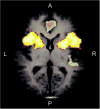What is an image?
- PMID: 18512292
- PMCID: PMC4306573
- DOI: 10.1097/CHI.0b013e318161e509
What is an image?
Conflict of interest statement
Disclosure: The authors report no conflicts of interest.
Figures





Publication types
MeSH terms
Grants and funding
LinkOut - more resources
Full Text Sources
Medical

